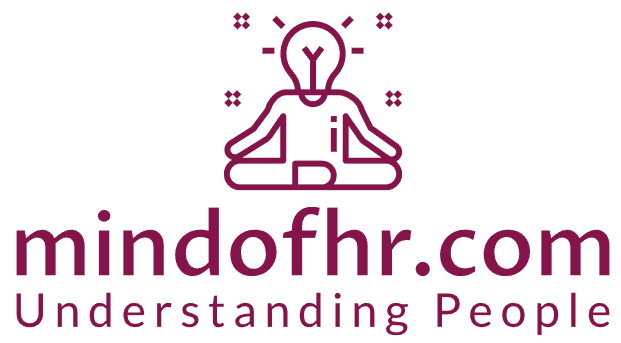We’ve all encountered them—the person who questions every idea, who always has a counterpoint, and whose initial response to anything new is skepticism. And if you’re like me, someone who’s had to present ideas in male-dominated boardrooms, often as the youngest person or the only women in the room, you know just how challenging it can be to get buy-in from these “always-naysayers.”
You walk in full of energy, with a great idea that you’re sure will bring value, but as soon as you start presenting, you can almost feel the resistance in the air. And it’s not just about the idea—it’s about you, the messenger. The age questions come first, followed by the gender remarks. It can feel like you’re fighting an uphill battle, and at times, it’s incredibly discouraging. But through trial and error, I’ve learned a few strategies to break through that resistance. Here’s how I’ve managed to turn even the toughest naysayers into supporters.
1. Don’t Let Age or Gender Define You
The first time I faced this, I was nervous—to say the least. I was presenting an idea in a boardroom where the average age of my colleagues was at least 20 years higher, and most of them had decades of experience. I was questioned on everything—from my age (“How can someone so young understand the complexities of this?”, “This is a very complex issue. Do you really understand the nuances of it?”, “Maybe someone with more experience should handle this.”) to my gender (“Do you think your perspective is really what we need here?” “This kind of leadership requires a more ‘strong’ presence. Are you sure you’re cut out for this?”, “Women tend to be more nurturing, don’t you think this is too aggressive a move for you?”, “Are you sure you want to take on this responsibility while juggling your other commitments?”). At that moment, it felt like every word I spoke was under intense scrutiny, and it stung.
But here’s the thing: I learned to stay calm and assertive. When you’re constantly questioned on your age or gender, the easiest response is to get defensive, but that’s exactly what they’re waiting for. The more composed you are, the more they have to focus on the merit of your ideas, not your background. In situations like this, it’s easy to feel like you’re under a microscope. People are going to question you—not just the idea, but who you are and where you come from. The most important thing is staying confident in the face of it all. Yes, you might get comments about your age or gender, but if you focus on your knowledge, expertise, and the merit of your ideas, people can’t help but see your value.
I’ve been in situations where people have questioned my experience, assuming that my ideas were too “fresh” or “unrealistic.” At first, I let it bother me, but over time I realized that the key is not to defend myself against those comments but to redirect the conversation back to the work. Eventually, if you keep delivering great ideas and results, those who once questioned you will begin to see that your value lies in what you bring to the table—not your age or gender.
Tip: Don’t let others’ biases distract you from your purpose. Stay focused, and the results will speak for themselves.
2. Prepare to Overwhelm with Data
Naysayers tend to be skeptical, and the best way to turn that skepticism around is to come prepared with undeniable evidence. Whether it’s data, case studies, or expert opinions, the more you have to back up your ideas, the harder it is for anyone to shoot them down. When I first encountered serious resistance in boardrooms, I knew that just having a good idea wasn’t enough; I had to show that it had been proven elsewhere or that the numbers supported it.
Imagine presenting a new idea for improving team efficiency or implementing a new technology. Some may be worried about the cost or the disruption it could cause. That’s where showing real-life examples or data from similar companies comes in. If you can prove that your solution has worked before, or if you can show statistics that support your approach, it becomes much harder for naysayers to continue resisting.
Tip: Equip yourself with data and examples that showcase how your idea has worked in similar situations. The numbers make it harder to dismiss you.
3. Focus on Incremental Wins
Sometimes, naysayers don’t completely reject your idea—they just want to see a smaller version of it first, to prove that it works. If you’re dealing with someone who’s resistant to a big change, offering a phased approach might be the best way to win them over. This allows them to test the waters before fully committing, reducing the perceived risk.
Let’s say you want to introduce a new system or strategy that requires a big shift. The key is to start small. Pilot the idea in one department, or run a small-scale project first, before rolling it out company-wide. By breaking the idea down into digestible pieces, you give naysayers the space they need to see that the idea works, and you gain their trust in the process.
Tip: Start with a pilot or smaller scale initiative. This reduces resistance and allows people to ease into the change.
4. Build Allies Along the Way
There’s an old saying: “It’s not what you know, it’s who you know.” And while I don’t fully agree with that (since what you know is absolutely important), I do believe that building alliances is crucial in getting buy-in from skeptics. The more allies you have, especially within the organization, the easier it is to get others on board with your idea.
Take a look at the people around you: are there any colleagues, even those who might not have direct influence, who can lend their support to your idea? If you can get one or two people to back your plan, it’s easier to sway others. Those initial supporters can help champion your cause when you face resistance, turning your once isolated project into a team-driven initiative.
Tip: Identify allies who believe in your idea. Having even one person who backs you can make a huge difference in shifting opinions.
5. Use Humor to Break the Ice
When the resistance feels particularly intense, sometimes a little humor can ease the tension and change the dynamics of the room. Naysayers often try to poke holes in your ideas to test your resolve, and a lighthearted response can disarm them. It’s not about undermining yourself; it’s about demonstrating that you’re confident and unbothered by their challenges.
For example, let’s say you’re presenting an idea to a board, and one of the members sarcastically asks, “Are you sure this will work?” A quick, light response like, “Well, if it doesn’t, at least we’ll learn a lot along the way!” can break the tension and bring some humor into the situation, helping people see you as someone who can handle the pressure.
Tip: A well-timed bit of humor can lighten the mood and help you maintain control of the conversation.
Conclusion: Transforming Naysayers into Allies
At the end of the day, getting buy-in from an always-naysayer isn’t about forcing them to agree with you on the spot. It’s about earning their respect and showing that your ideas are worth considering. By staying confident, preparing thoroughly, and understanding their concerns, you can turn even the most vocal skeptics into your strongest supporters.
You might still face resistance, especially when your age, gender, or experience are being questioned. But by focusing on the value of your ideas and your ability to lead them to success, you’ll win them over one step at a time. In my experience, once you prove that you can deliver results, even the harshest critics become your biggest advocates. So, next time you walk into that boardroom or pitch your idea to a skeptical audience, remember: you belong there, and your ideas are worth being heard.











